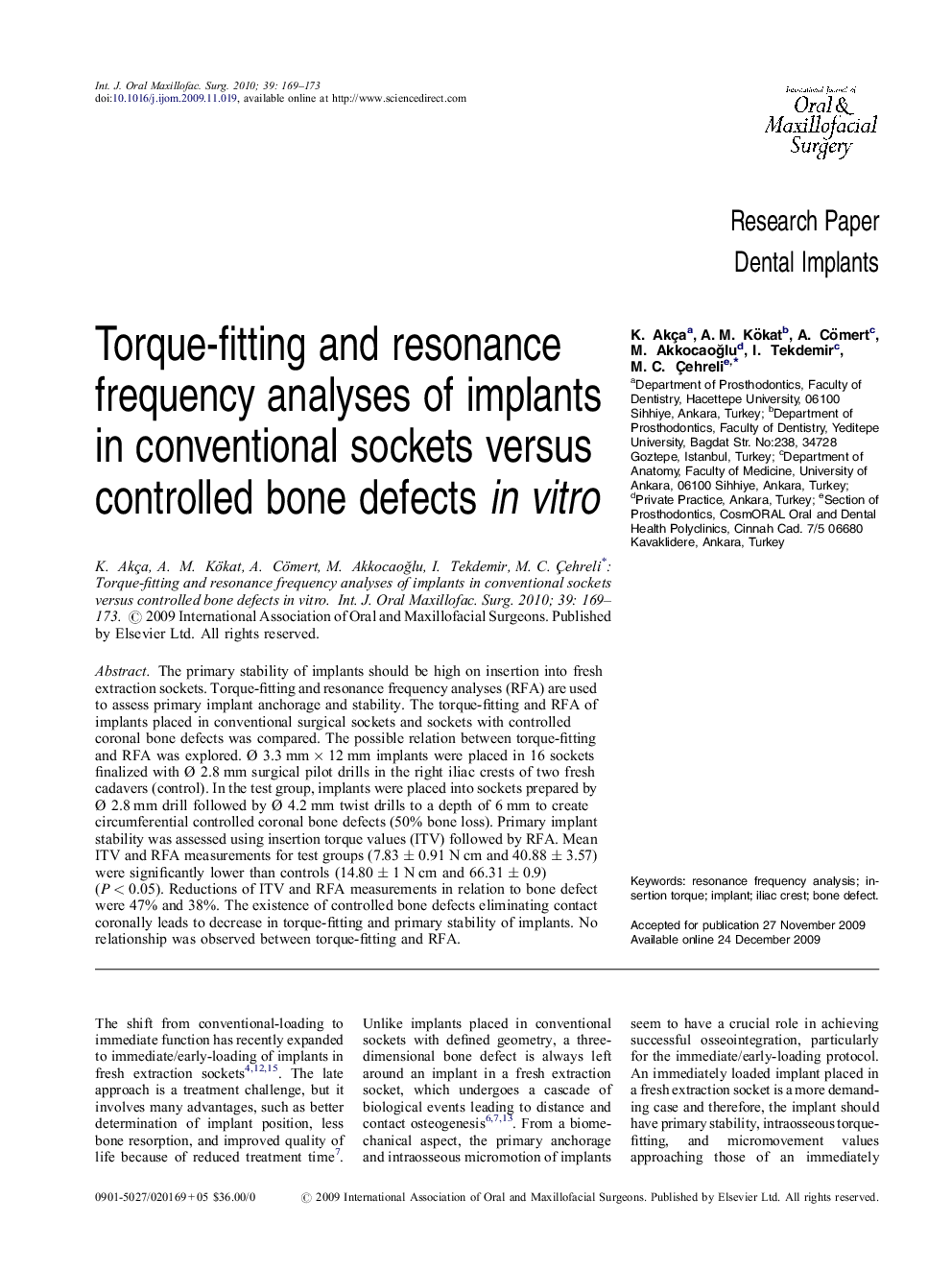| کد مقاله | کد نشریه | سال انتشار | مقاله انگلیسی | نسخه تمام متن |
|---|---|---|---|---|
| 3134158 | 1584193 | 2010 | 5 صفحه PDF | دانلود رایگان |

The primary stability of implants should be high on insertion into fresh extraction sockets. Torque-fitting and resonance frequency analyses (RFA) are used to assess primary implant anchorage and stability. The torque-fitting and RFA of implants placed in conventional surgical sockets and sockets with controlled coronal bone defects was compared. The possible relation between torque-fitting and RFA was explored. Ø 3.3 mm × 12 mm implants were placed in 16 sockets finalized with Ø 2.8 mm surgical pilot drills in the right iliac crests of two fresh cadavers (control). In the test group, implants were placed into sockets prepared by Ø 2.8 mm drill followed by Ø 4.2 mm twist drills to a depth of 6 mm to create circumferential controlled coronal bone defects (50% bone loss). Primary implant stability was assessed using insertion torque values (ITV) followed by RFA. Mean ITV and RFA measurements for test groups (7.83 ± 0.91 N cm and 40.88 ± 3.57) were significantly lower than controls (14.80 ± 1 N cm and 66.31 ± 0.9) (P < 0.05). Reductions of ITV and RFA measurements in relation to bone defect were 47% and 38%. The existence of controlled bone defects eliminating contact coronally leads to decrease in torque-fitting and primary stability of implants. No relationship was observed between torque-fitting and RFA.
Journal: International Journal of Oral and Maxillofacial Surgery - Volume 39, Issue 2, February 2010, Pages 169–173